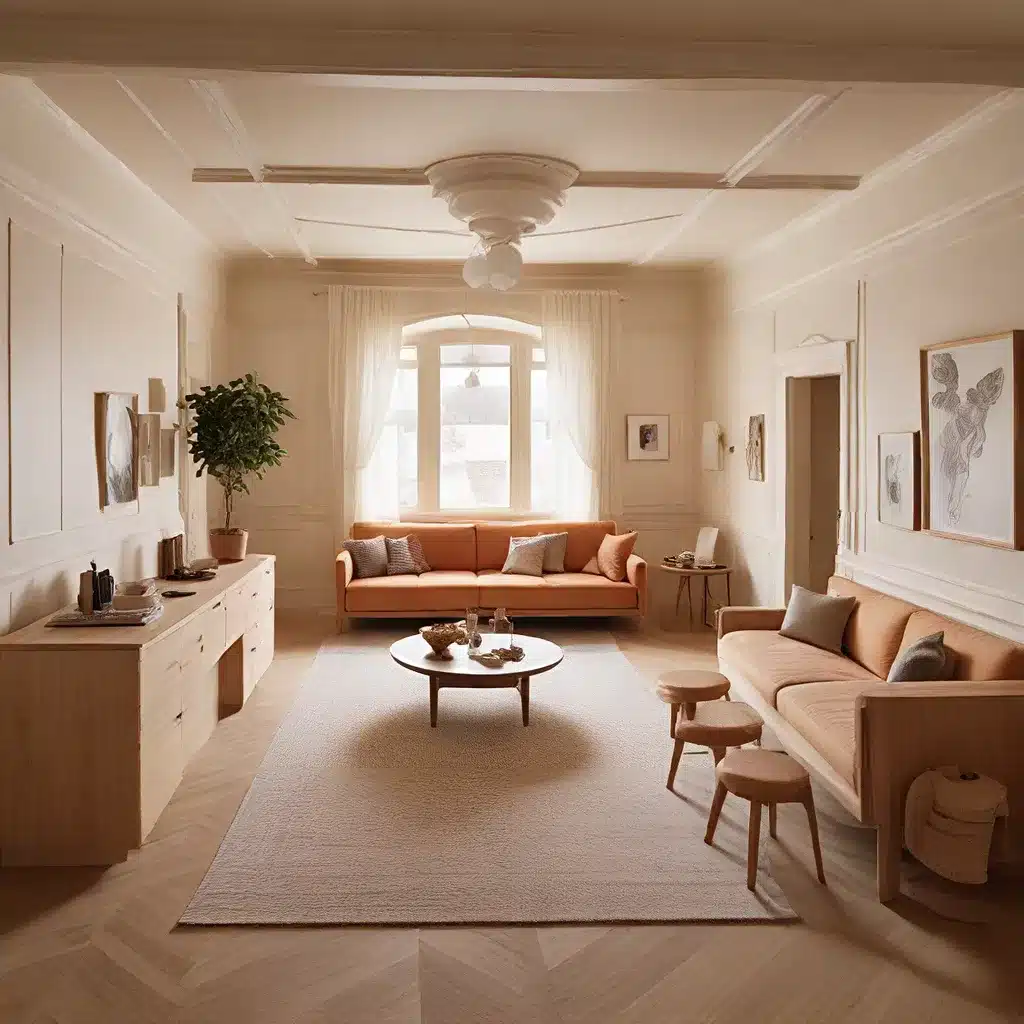
In the ever-evolving landscape of interior design, a new paradigm is emerging – one that goes beyond aesthetics and delves into the realm of emotional narratives. This approach, often referred to as spatial storytelling, is transforming the way we conceptualize and experience living spaces, turning them into captivating sanctuaries that resonate with the occupants on a deeper level.
The Art of Spatial Layout
The foundation of any compelling narrative lies in the spatial layout. Just as a well-crafted story has a purposeful structure, the arrangement of a space can guide occupants through a sequence of experiences, evoking specific emotions and inviting exploration.
An intelligently designed floor plan acts as the canvas upon which the story unfolds. By thoughtfully considering the flow of movement, the transitions between areas, and the manipulation of scale and proportion, designers can create spaces that captivate and engage the senses.
Imagine a cozy nook, perfect for intimate conversations, nestled within an open-plan layout that fosters a sense of community. This juxtaposition of scale and spatial dynamics can elicit feelings of comfort and connection, inviting the occupants to immerse themselves in the narrative.
The Palette of Emotion
Color is a powerful tool in the arsenal of spatial storytelling. Each hue possesses the ability to evoke emotions, set moods, and convey narratives. From the whispered serenity of soft pastels to the commanding presence of bold, vibrant tones, color choices imbue a space with personality and meaning.
When crafting an emotional narrative through design, consider the psychological effects of color. Warm tones like crimson and gold may evoke feelings of warmth and intimacy, making them an ideal choice for spaces intended for social gatherings. Conversely, cool blues and greens can instill a sense of calm and tranquility, creating serene retreats for the occupants.
By strategically employing color palettes, designers can infuse their creations with layers of meaning and emotion, enriching the overall storytelling experience.
Sensory Storytelling: Engaging the Senses
Great stories don’t just engage the mind; they captivate the senses as well. The same principle applies to interior design, where sensory storytelling goes beyond visual aesthetics and encompasses elements that stimulate touch, smell, taste, and sound.
Texture plays a crucial role in sensory storytelling, inviting tactile exploration and adding depth to the narrative. From plush carpets that beckon bare feet to rough-hewn stone walls that exude rugged charm, incorporating a variety of textures enhances the sensory richness of a space.
Furthermore, consider the olfactory dimension of design – the subtle interplay of scents that can evoke memories and emotions. Carefully curated fragrances can transport occupants to a specific time or place, deepening the connection between the space and the individual.
By engaging multiple senses, designers can create immersive experiences that resonate with the occupants on a profound level, leaving a lasting impression and evoking a strong emotional response.
Personalization: Infusing Spaces with Identity
No story is complete without its characters, and in the realm of interior design, the occupants themselves take center stage. Personalization is the key to creating spaces that resonate with individuals on a personal level, reflecting their tastes, interests, and aspirations.
From family photographs adorning the walls to heirloom furniture passed down through generations, incorporating elements of personal significance infuses a space with authenticity and depth. Moreover, interactive features such as customizable lighting schemes or modular furniture arrangements empower occupants to shape their narratives within the space, making it a true extension of their identity.
By embracing personalization, designers can craft environments that feel like a natural extension of the occupants, fostering a profound sense of belonging and connection.
Crafting Emotional Sanctuaries
In a world increasingly dominated by digital experiences, the human desire for connection and a sense of belonging remains paramount. Spatial storytelling in interior design fulfills this need, crafting spaces that feel like an extension of ourselves – a reflection of our experiences, aspirations, and the very essence of our being.
At Urban Grace Interiors Inc., we approach every project with a deep understanding of the power of storytelling. We believe that great design transcends the purely aesthetic, delving into the realm of emotion and creating captivating narratives that transform a sterile room into a stirring sanctuary.
Through the strategic use of spatial layout, color palettes, sensory experiences, and personalization, we weave a tapestry of design elements that resonate with the occupants, inviting them to immerse themselves in a world of their own making.
Whether you’re a homeowner seeking to breathe life into your living spaces or a design enthusiast captivated by the art of spatial storytelling, we invite you to explore the transformative power of interiors that evoke emotional narratives. Let us embark on a journey together, crafting spaces that not only delight the senses but also nourish the soul.

